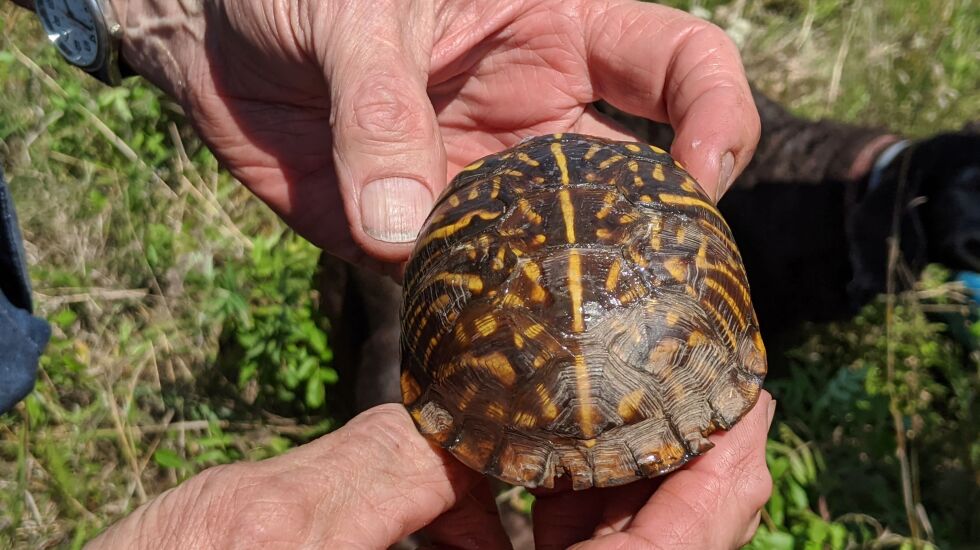
One of best things I ever did with my older boys was an overnight trek to Snake Road to view creatures ‘‘that creepeth upon the earth,’’ as it is called in Genesis.
That was the first memory and thought that came into my strange head when I opened the second edition (updated after 20 years) and first paperback version of ‘‘Field Guide to Amphibians and Reptiles of Illinois,’’ which was released Tuesday.
It’s truly an illustrated guide to all things herpetology in Illinois, with 177 color photographs, 100 maps and an identification key.

Snake Road might be Illinois’ top claim to fame in the world of reptiles and amphibians. Each spring and fall, LaRue Road is closed to vehicles to protect reptiles and amphibians in seasonal migrations between LaRue Swamp and the nearby bluffs at LaRue-Pine Hills/Otter Pond Research Natural Area.
According to the Forest Service, ‘‘About 66% of the amphibians and 59% of the reptiles known to occur in Illinois are found here (approximately 35 species of snakes).’’
‘‘Field Guide to Amphibians and Reptiles of Illinois’’ covers an even broader canvas with our state’s wide range of climates, habitats, amphibians and reptiles.
I thought I knew a bit about the turtles in Illinois — I’ve been on a couple of treks with John Rucker and his Boykin spaniels to look for ornate box turtles — until I checked the turtle section. The variety overwhelmed me. It was far beyond the usual painted, box and snapping turtles.
Salamanders open the ‘‘Species Accounts.’’ It was overwhelming and embarrassing to realize I could name only a few that I had seen, even though I have done a few things with Allison Sacerdote-Velat, the curator of herpetology at the Chicago Academy of Sciences/Peggy Notebaert Nature Museum. I enjoyed seeing mudpuppies receive a three-page treatment. Every one I’ve ever seen has brought a sense of wonder and surprise.

The general treatment of each species is subspecies, description, natural history, habitat/distribution and status. Reading the statuses is depressing in too many cases.
The authors are Christopher A. Phillips, the curator of amphibians and reptiles for the Illinois Natural History Survey; John A. Crawford, an ecologist at the Great Rivers Research and Education Center; and Andrew R. Kuhns, an associate survey scientist and herpetologist for INHS. Phillips is one of my go-tos on herpetology questions from myself and readers.
The snake section really overwhelmed me. There are 75 pages of snakes.
Again, my strange mind went to strange places and to Genesis 3:15 (King James version) about the serpent and Eve: ‘‘And I will put enmity between thee and the woman, and between thy seed and her seed; it shall bruise thy head, and thou shalt bruise his heel.’’
Don’t get me started on my reaction to northern watersnakes or rattlesnakes. Get nipped just once by a watersnake or hike past a rattling curled rattler, and you don’t forget.
The reality is that I’m more of a mammal or fish guy. Yes, there’s probably anthropomorphism in that.
My truth is that a red fox or American red squirrel touch me more than spotting even a painted turtle sliding into a backwater from a log or a garter snake slithering off from a wood pile.
But I digress.
The reintroduction of alligator snapping turtles intrigues me, in part because it is a long-term project. (Alligator snappers can live 100 years.) I found this sentence chilling in its natural-history section: ‘‘Humans are the chief predators of large adults.’’
Even without getting old-time biblical, we can do better.
The paperback sells for $24.95 and the e-book for $14.95.
More information is at press.uillinois.edu/books/browse_books.html.








